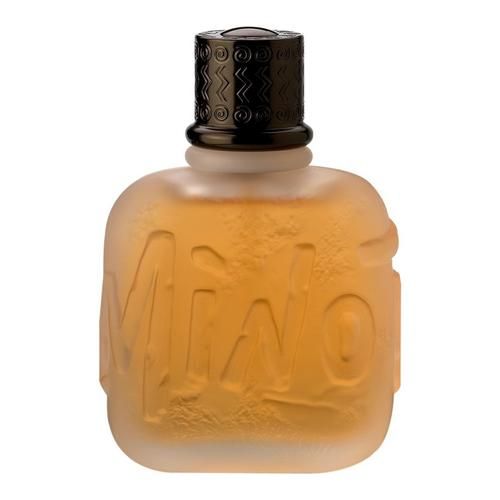Minotaur, all the strength of a Greek hero
Paloma was brought up in an artistic world and it seems like everything is working out for her. Recognized for her daring and originality, Paloma Picasso will be hired by Yves-Saint-Laurent. In 1984, Paloma Picasso unveiled his olfactory self-portrait “Paloma Picasso”, a floral chypre fragrance that went against the fashion of the moment. In 1992, Paloma Picasso presented his second perfume “Minotaur”.
The power of the gods in a bottle
Second bottle of Paloma Picasso, “Minotaure” is directly inspired by Greek mythology , dear to the heart of Paloma Picasso. You should know that the Minotaur, whose real name is Asterios, was a monster with the head of a bull. According to the Greeks, the Minotaur was born from a love between Pasiphae and a white bull sent by Poseidon. From birth, the Minotaur was then locked up by King Minos in a labyrinth in Crete, so that no one could ever meet him. Paloma Picasso chose “Minotaur” as the name for her perfume, because she wanted an ultra masculine fragrance, with a share of magic. “Minotaur” is a strong man, ultra virile and his strength is reflected in a personality that is at least magical. “Minotaur” exudes an undeniable force, but also a hidden sensitivity,
The legendary notes of the Minotaur
“Minotaur” is considered an oriental fern fragrance. Developed by Michel Almairac, this second opus of the brand is extremely mythological. “Minotaur” begins with aldehyde notes, associated with the very green notes of galbanum, as well as the aromatic scents of tarragon. The heart of the “Minotaur” is very floral and surprisingly feminine with the presence of rose, geranium, lily of the valley and geranium. The base is warm, oriental and sensual thanks to the presence of vanilla, sandalwood, tonka bean and amber. The bottle appears like an ultra imposing silhouette. It then seems to have been carved from a block of granite. Its touch is however soft and sensual. The name of the perfume is engraved in relief. The stopper was made in a material that looks like bronze,
A name directly inspired by Greek mythology for an ultra masculine composition, it is “Minotaur”. Paloma Picasso’s second fragrance offers confidence, virility and daring. Paloma Picasso also draws magic from Greek mythology. “Minotaur” reveals a self-confident, confident man. This gives it an absolutely irresistible charismatic side.
By creating “Minotaure” in 1992, Paloma Picasso wanted to associate the world of perfumery with Greek mythology. Asterios, which is the Minotaur’s real name, was a bull-headed monster. According to legend, the Minotaur was born from a love between Pasiphae and a white bull sent by Poseidon. King Minos has locked the Minotaur in a maze on Crete so that no one can ever meet him. “Minotaur” is therefore a scent steeped in history, as virile as it is masculine.
The Minotaur Paloma Picasso, at the heart of Greek mythology
< p> Born in Grasse in 1963, Michel Almairac grew up in the fields of jasmine and rose. For him, becoming a perfumer was quite obvious. Michel Almairac learned the profession of perfumer at the Roure school (now Givaudan), before working successively for Takasago, Créations Aromatique (now Symrise), Drom then Robertet. In 2016, Michel Almairac created a boutique-lab, with his son Romain, in the heart of Paris called “Parle moi de parfum”. Michel Almairac is a big name in perfumery. He imagined many fragrances like “This is Her” by Zadig & amp; Voltaire, “Roses de Chloé” by Chloé or even “Burberry for Men” by Burberry.
The Minotaur perfume, between power and virility
“Le Minotaure” takes off on Ultra energizing notes, namely that of bergamot, associated with aldehyde notes, green notes of galbanum and aromatic notes of tarragon. Galbanum, also called “Gummy ferrule” is a perennial plant with a hollow stem. Native to Asia, galbanum is found on the grassy slopes of the steppes of Asia. It then produces a gum which is obtained by severing the stems and incising the roots. Originally, galbanum was used for its many medicinal properties. In perfumery, galbanum offers very green, earthy and balsamic tones. Then, the heart of the “Minotaur” is opulent and feminine, because it combines jasmine, geranium, rose and lily of the valley. The name of the geranium comes from the Greek “geranos” which means “crane”, because of the appearance of the plant. Originally from South Africa, geraniums were introduced to the Netherlands in 1672. From the 18th century, geraniums can be found in many botanical gardens in Europe. In perfumery, an essential oil is obtained by steam distillation of the leaves and flowering stems. Geranium gives off scents that are at once floral, green, spicy and minty. Finally, the background of the “Minotaur” is intended to be as sensual as it is virile thanks to the presence of sandalwood, tonka bean, vanilla and amber, leaving behind a most impressive trail. The precious nectar is retained in a sandblasted glass case. The bottle then displays an imposing silhouette as if it had been carved from a block of granite. Its name is engraved in relief and its bronze cabochon echoes ancient Greece.
Oriental
